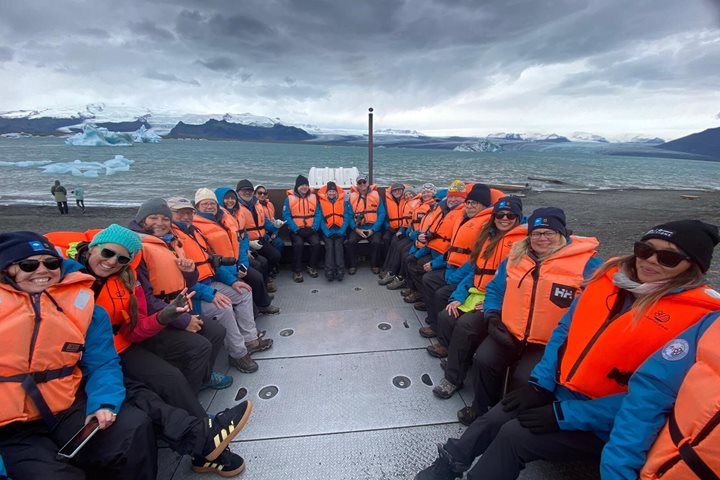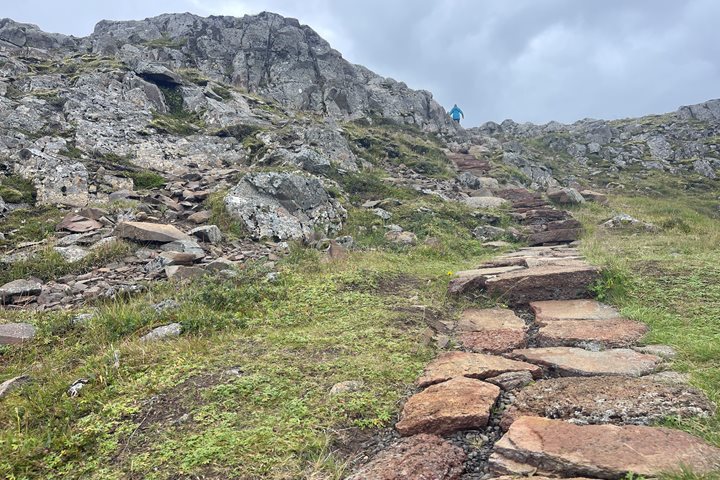By mid-morning, National Geographic Explorer had reached the volcanic islands in the Westman Archipelago off the southern reaches of Iceland. We went straight to Surtsey and circumnavigated it for some amazing views of the island’s geology. The variable patterns, shapes, and colors made for wonderful photographic opportunities (Figure A). This island is world renowned in that it suddenly appeared in late 1963 when a series of underwater eruptions built up a new land mass through the accumulation of volcanic debris that rose from the sea floor at a depth of 120 meters (400 feet) to reach a height of 170 meters (560 feet) above sea level. It has been a scientist’s dream, in that it has allowed researchers to observe a sterile, new bit of landmass slowly take on life. Over time, various lichens, fungi, mosses, and vascular plants, as well as invertebrates and nesting seabirds eventually took hold on the ash deposits of the volcanic island. In the meantime, erosion has formed some impressive sea cliffs and decreased the overall size of the island by half over the past 50 years.
As our ship moved off from Surtsey, a call went out…killer whales! So, we headed in their direction for a closer look. A few minutes later, more splashing was observed and another call went out…long-finned pilot whales! We spent time with all of them. First, the pilot whales came racing over to our vessel and circled around us, sometimes moving quickly with lots of splashing and sometimes stopping to mill about. We figured they were after schools of mackerel. The killer whales also exhibited feeding behavior. And, many gannets, fulmars, and gulls were in on the act. The pilot whales and killer whales didn’t seem to pay each other much mind, but the two species definitely did not interact. It seemed as though the pilot whales stayed together as a fairly tight group, while the killer whales were spread far and wide in numerous small sub-groups. It was very difficult to estimate numbers, but an exciting time was had by all–birds, cetaceans, and humans.
During lunch, we picked up the harbor pilot for Heimaey and made our way in through the narrow, dramatic entrance to the harbor. In the early afternoon, many of us set off on a long walk to hike up to the top of the nearby volcano that nearly destroyed the town in 1973. The whole world watched news reports of the local inhabitants struggling to save their town from the onslaught of flowing lava. A significant number of the houses were destroyed and covered up by thick lava, but their quick-thinking mayor ordered water pumps to be used to try to stem the lava flow headed for the harbor. By pumping immense amounts of water on the leading edge of the flow, the lava was cooled and hardened enough to stop its advancement at the harbor mouth. Others of us boarded coaches for a tour around the island to see the important sites. Everybody finished up at the award-winning Volcano Museum, which most of us agreed is an excellent place to learn all about the geology and the volcanic history of this fascinating island. Most of us were out on deck as the ship transited through the narrow opening of the harbor and set off to sea for the last leg of the voyage back to Reykjavik, where we began the trip.







